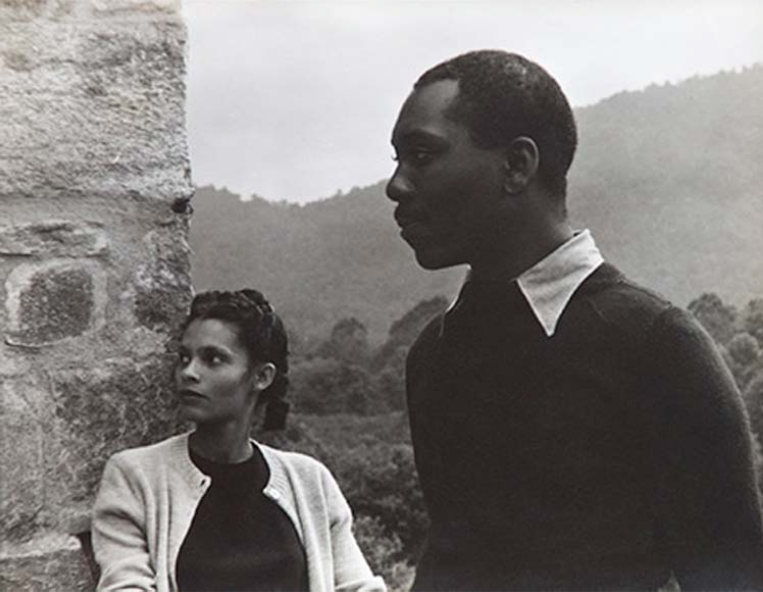Regarded as one of the most important artists of the 20th century, Jacob Lawrence’s modernist paintings depicted “everyday life as well as epic narratives of African-American history and historical figures,” writes the DC Moore Gallery, which represents his work. Lawrence came of age in Harlem just a decade after that neighborhood’s renaissance and gained national recognition for his 1941 Migration Series. He also became, at 24, “the first African-American to be represented by a New York gallery.”
In 1946, he and his wife Gwendolyn Knight Lawrence — also a lifelong artist — came to teach at Black Mountain College.
The college started contemplating racial inclusion in the 1930s and, in the 1940s, began to incorporate African-American culture and history into its programming. Josef Albers, a German-born artist and faculty member of Black Mountain College (and influence on the Lawrences) was pro-integration, but was concerned about the timing. In 1944, he wrote to author Zora Neale Hurston seeking her advice. That year, African-American student Alma Stone Williams was admitted as a “visiting guest” to the summer music institute. The experiment was deemed a success and, the following year, African-American singers Roland Hayes and Carol Brice were invited to the summer session as guest teachers. Sylvesta Martin, who took classes at the 1945 summer institute, was accepted for the college’s fall semester as its first full-time African-American student, according to the Black Mountain Studies Journal, which adds, “The same year that the school admitted Martin, it also hired its first full-time African-American faculty member, [biology teacher] Percy H. Baker.”
It was Albers who invited the Lawrences for the 1946 summer session. They were provided with private transportation to shield them from segregation. The Black Mountain Studies Journal reports it was only the couple’s second time in the South, and they didn’t leave the campus during their stay. Interestingly, “in 1947 Fortune Magazine commissioned [Jacob] to do 10 paintings examining postwar conditions in the American South,” according the DC Moore Gallery’s biography of the artist.
A current exhibition at the Gibbes Museum of Art in Charleston, S.C. (organized by the SCAD Museum of Art with support from the Jacob and Gwendolyn Knight Lawrence Foundation) provides “a comprehensive overview of … Jacob Lawrence’s printmaking oeuvre, featuring works produced from 1963 to 2000,” says a press release for the museum. And Black Mountain College + Arts Center is in the process of commissioning work by three contemporary multimedia artists for a 2018 exhibition. Those artists “have committed to create sound, video and animation pieces as a response to Lawrence’s work, the distinctive landscape of Black Mountain College at Lake Eden, and other visual materials,” reads a detail of the forthcoming Between Form and Content: Historical and Contemporary Perspectives on Jacob Lawrence and Black Mountain College.



wonderful expression of courage in the face of ongoing (2017) racism prevalent throughout this region yet still existing throughout the nation, “a nation divided will fall behind the rest of the world”